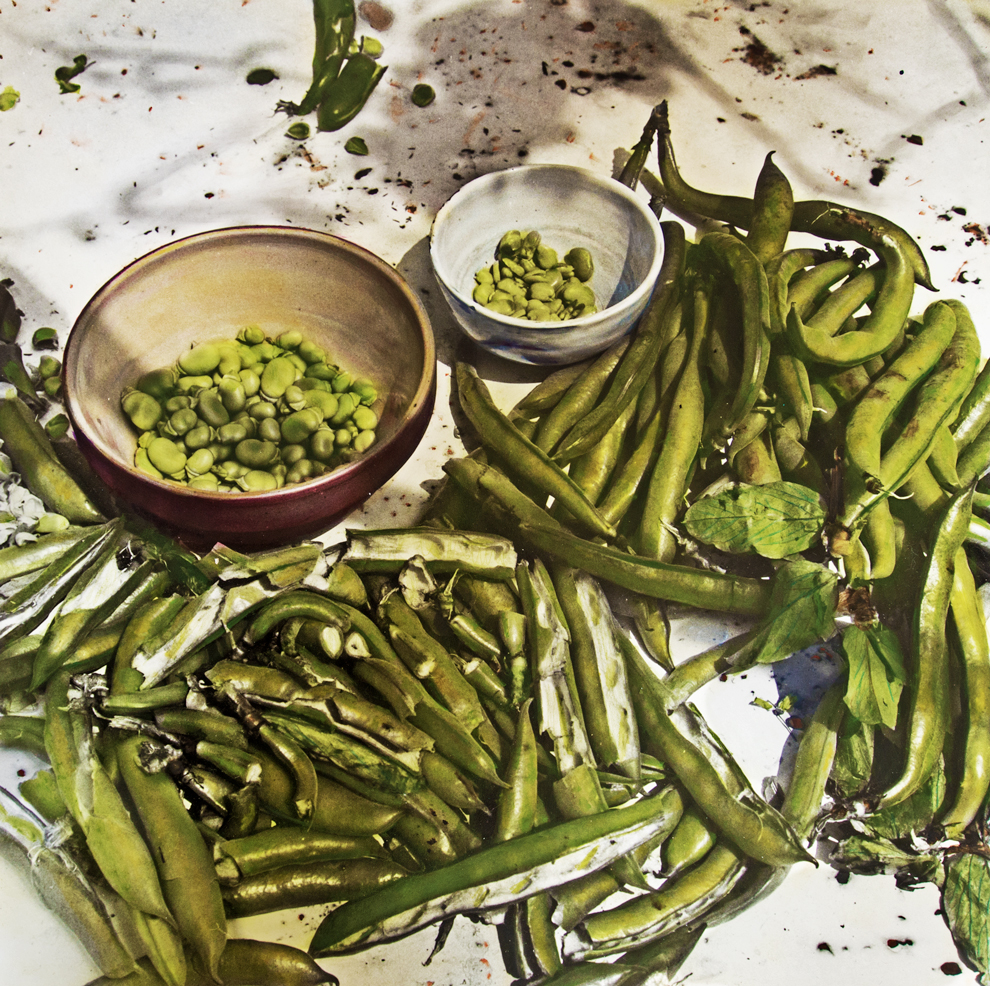Richard Olney’s Fresh Fava Bean Purée
by Christopher Lee


Recently, Kermit asked me to cook a dinner for his staff and, as usual, he and I exchanged a few short emails about the menu. I always like cooking for Kermit and his crew; they’re cheeringly enthusiastic about the food and heartily enjoy eating it. In one of my emails I mentioned that I’d like to serve fava beans—it is spring, after all—and Kermit remembered a fava bean purée Richard Olney once served him in Provence—fava beans on toast, familiar enough. But then came the moment of brilliance from Richard’s old-school French cooking: the purée gets enriched with butter, not olive oil. Of course! French cuisine. But it was Kermit’s peculiar description of Richard’s recipe that beguiled me. To his eyes, it looked like half favas, half butter, half salt. I knew exactly what he meant.
Fava beans have been around for a long time, and memories are short. These days everyone cooks Italian-style food, so typically favas are mashed together in a mortar and pestle—a Stone Age tool—with lots of olive oil and Parmesan, or Pecorino, smeared on toast, and served as a starter. It’s really good, and a delight each spring. But when you dig into the culinary library a bit, you find all kinds of other ingredients get tossed in, across various cultures: dill in Iran; garlic and cumin in Egypt on toast for breakfast; mint, olive oil, and vinegar in Malta, again on toast; wild chicories in a Puglian pasta. You quickly sense what an enchanted world cooking is.
I did a trial run of the dish, to see what it was, exactly. I served it at dinner to a Catalan friend who was nothing but scandalized by the idea of butter and favas pounded together. I expected her bewilderment, and even delighted in it a little bit. Cultural consternation. But even after a patient explication of the recipe, she still wondered why anyone would do such a thing as that.
The recipe’s a pretty simple affair. Prepare favas the usual way: pop them out of their outer pods; blanch, then chill them in ice water; and finally remove the inner skin that shrouds the bean itself. Pound them to a purée in small batches in a mortar and pestle with a generous ration of sea salt. The result doesn’t have to be absolutely smooth; a few whole or broken beans can remain in the mixture. In the mortar, slowly mash in sweet, unsalted, top-quality butter softened to room temperature, stirring the pestle in a constant circular motion. As you incorporate the butter into the fava beans, the purée will smooth out even more. The ratio is not quite one-to-one butter-to-fava beans, but it’s close, maybe three parts favas to two parts butter. And then stir in your finest salt. Voilà! Smear a thick layer of the purée on a still-warm baguette toast, and sprinkle slightly coarse sea salt on top. It’s really a perfect taste. Old-school French cooking. Vive la France!

















